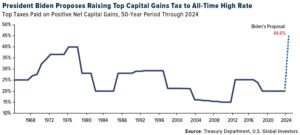1/ Relative to S&P 500 Index
2/ Flat 200-day Moving Average
3/ Short-term Moving Average Breadth
4/ Daily Price Momentum Oscillator
Investopedia is partnering with CMT Association on this newsletter. The contents of this newsletter are for informational and educational purposes only, however, and do not constitute investing advice. The guest authors, which may sell research to investors, and may trade or hold positions in securities mentioned herein do not represent the views of CMT Association or Investopedia. Please consult a financial advisor for investment recommendations and services.
1/ Relative to S&P 500 Index
Small-caps relative to large-caps are trading at decade lows. The below chart takes the Russell 2000 and divides it by the S&P 500 Index. The result is a price ratio chart. When the blue line is trending lower small-caps are underperforming.


Many investors have commented on the attractive relative valuation of small-caps. This is certainly true – however valuations can get worse. Price charts can help us determine when the asset class is trending, providing a more favorable entry point for long-term investors.
2/ Flat 200-day Moving Average
The most watched small-cap stock index is the Russell 2000 Index. It’s the only major US index that is trading below its August 2022 highs and below the 200-day moving average. The slope of the 200-day moving average is flat, as this index is struggling to establish trend.


3/ Short-term Moving Average Breadth
One positive development for small-caps is the index is holding a crucial support zone around 1,700. This zone was tested 3 times over the past year.


Additionally, short-term moving average breadth appears to be bottoming. When evaluating the percentage of Russell 2000 stocks trading above their 50-day average, we’re near 20%. A level that historically marked a near-term bottom in the index.
4/ Daily Price Momentum Oscillator
Short-term momentum indicators are also optimistic. The below chart highlights the daily price momentum oscillator (PMO). This indicator is very similar to the popular MACD indicator. We’re yet to witness a bullish cross (highlighted by green circles) but the PMO line is turning up in anticipation of a cross. This points to bullish short-term momentum in the index.


Yes, the Russell 2000 Index is trendless. But so long as the 1,700 level holds, I’d expect the bulls to outnumber the bears.
—
Originally posted 11th October 2023
Disclosure: Investopedia
Investopedia.com: The comments, opinions and analyses expressed herein are for informational purposes only and should not be considered individual investment advice or recommendations to invest in any security or to adopt any investment strategy. While we believe the information provided herein is reliable, we do not warrant its accuracy or completeness. The views and strategies described on our content may not be suitable for all investors. Because market and economic conditions are subject to rapid change, all comments, opinions and analyses contained within our content are rendered as of the date of the posting and may change without notice. The material is not intended as a complete analysis of every material fact regarding any country, region, market, industry, investment or strategy. This information is intended for US residents only.
Disclosure: Interactive Brokers
Information posted on IBKR Campus that is provided by third-parties does NOT constitute a recommendation that you should contract for the services of that third party. Third-party participants who contribute to IBKR Campus are independent of Interactive Brokers and Interactive Brokers does not make any representations or warranties concerning the services offered, their past or future performance, or the accuracy of the information provided by the third party. Past performance is no guarantee of future results.
This material is from Investopedia and is being posted with its permission. The views expressed in this material are solely those of the author and/or Investopedia and Interactive Brokers is not endorsing or recommending any investment or trading discussed in the material. This material is not and should not be construed as an offer to buy or sell any security. It should not be construed as research or investment advice or a recommendation to buy, sell or hold any security or commodity. This material does not and is not intended to take into account the particular financial conditions, investment objectives or requirements of individual customers. Before acting on this material, you should consider whether it is suitable for your particular circumstances and, as necessary, seek professional advice.
































Join The Conversation
If you have a general question, it may already be covered in our FAQs. If you have an account-specific question or concern, please reach out to Client Services.